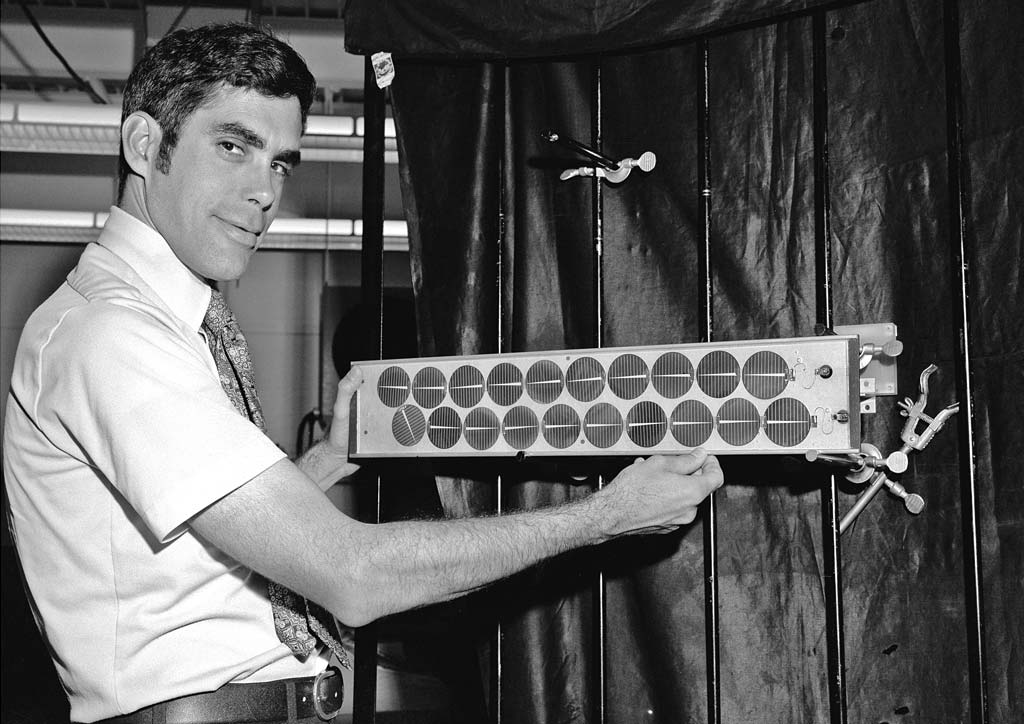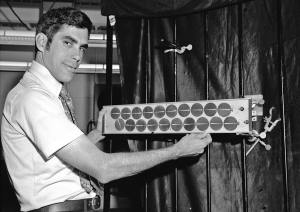
Henry Curtis with a Solar Cell Test Package
Henry Curtis displays a solar cell test package in the Energy Conversion Laboratory at the National Aeronautics and Space Administration (NASA) Lewis Research Center. Curtis was a researcher in the Photovoltaic Technology Branch of the Solar and Electrochemistry Division. At the time, he was among two dozen Lewis researchers and technicians working on solar cells and arrays. They were particularly interested in high-efficiency single-junction cells and multi-junction semi-conductor cells. Curtis’ work focused on solar cells for terrestrial applications. Lewis had one of the nation’s largest test facilities for testing terrestrial solar cells. Curtis joined NASA Lewis in 1961 after graduating from Kenyon College. He began his career in computer engineering. By 1967 Curtiss joined the Instrument and Computing Division’s Optics Section. The Optics Section developed a new light source 20 times more powerful than the largest commercially-available source. It employed a small electrical arc which was magnified through 125 lenses. The Optics Section held a “wake” when their section eradicated in 1979. Curtis earned a Master’s degree in physics from John Carroll University in 1973. He transferred to the Photovoltaic Research and Technology Branch in 1976 and began working on solar cells for terrestrial and space applications. In 1994 Curtis jointly led the center’s efforts in launching the Air Force’s Photovoltaic Array Space Power Plus Diagnostics (PASP Plus) flight experiment. Curtis retired at the end of 2004 with 43 years of NASA service.
- X



























